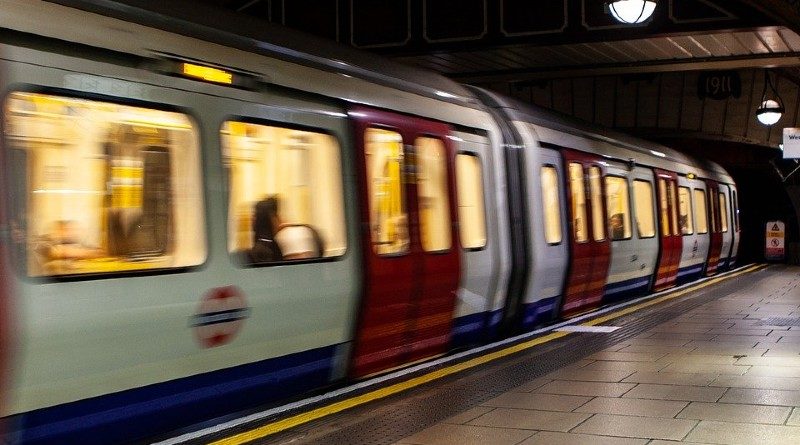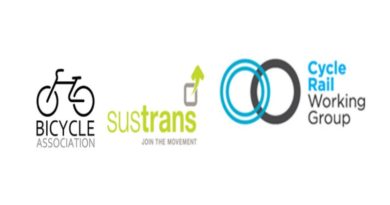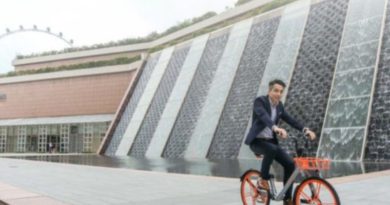“The next 20 days will set the agenda for the next 20 years”
Lockdown restrictions in the UK as a result of the Covid-19 pandemic have seen a significant drop in the use of cars and public transport across the country, with many turning to walking and cycling for exercise and to travel safely under the Government’s social distancing guidelines.
A webinar organised by independent thinktank Green Alliance brought together three specialists in travel and transportation to examine what long term effects Covid-19 could have upon the UK’s transport system, and whether any of the benefits of increased active travel levels seen during the pandemic will be retained in favour of pre-crisis transport habits.
The panellists included:
Making temporary measures permanent
Shirley Rodrigues, Deputy Mayor for Environment and Energy, Greater London
Part of our recovery from this pandemic means making those emergency measures we have implemented, permanent. Our new Street Space programme involves reclaiming some of London’s road space to enable more walking and cycling so that people who are not able to use public transport can still get to where they need to go safely, without encouraging car use.
In terms of transportation in London, the problem we face is capacity. Capacity for our public transport network is going to be reduced to a fifth of pre-crisis levels, so that means we will have around eight million journeys a day needing to be made by other means. The emergency measures we have brought in have seen a tripling of protected space for cycling, and in some of these areas we’re expecting to see a tenfold increase in cycling if people use them. What we want to make sure we do is lock in those temporary measures we have now, so that they become more permanent as we move forwards.
Chris Boardman, Cycling and Walking Commissioner, Greater Manchester
We have to choose how we use this space. The beauty of where we find ourselves now is the temporary nature of it; this is about keeping people safely apart and letting them travel without having to use public transport. We have a huge body of evidence from the last few months that says people will do this, given the right circumstances. On average, cycling is up 42% on pre-Covid levels while every other mode of transport is down 60-90%, and by implementing these temporary measures you can address the needs of the virus while also trying something different, and if it doesn’t work you can simply take the cones out and go back to normal.
Really, the question for us is: if we don’t try, what does that say about us? It may sound melodramatic, but we can change the country for the better, or not. I genuinely believe that what happens in the next 20 days will set the agenda for the next 20 years.
Jillian Anable, Professor of Transport and Energy, Institute for Transport Studies
The only way behaviour is going to change is if there’s an attractive product for people to take up. I think it is perfectly plausible, and in my view probable, that both walking and cycling, and car use, are going to increase, particularly car use over the medium term as we climb out of whatever recession we have. I am not entirely positive about the role of walking and cycling and that’s because we need to bear in mind the scale of change that needs to happen in order to reach our 2050 climate target. Before Covid-19, cycling and walking in the UK accounted for only 4% of the total distance travelled.
Saying that, if we can’t be bold now, then when can we be? But we must not lose sight of the scale of the ambition we are talking about, and just how much investment we need to put into the transport system.
Implementing a ‘Green Recovery’
Shirley Rodrigues, Deputy Mayor for Environment and Energy, Greater London
We want our recovery from the pandemic to be a green one, and so we have announced a new Recovery Task Force which will be focusing on our economic and social recovery, making sure it creates a fairer, cleaner and greener society.
The implementation of the congestion charge, the Low Emission Zone (LEZ) and Ultra Low Emission Zone (ULEZ), has seen a huge decrease in air pollution, around 44% of nitrogen dioxide in the central ULEZ zone, which actually dwarfs the change that we’ve seen since the lockdown.
However, as people start going back to work and lockdown eases we’re already hearing people say they would rather drive than use public transport, and we do not want this to lead to an erosion of the positive impacts we have secured so far. We know that cycling is essential to this recovery as an alternative to people to getting back into their cars and bringing back additional dis-benefits such as noise and air pollution, safety and so on.
Destination Shifting and leisure travel
Jillian Anable, Professor of Transport and Energy, Institute for Transport Studies
At the moment, we focus on the proportion of journeys that are short and that can be walked or cycled, but the statistic we really need to focus on is that 3% of trips we undertake are responsible for a third of the distance we travel, not including aviation. These are predominantly leisure travel journeys.
So, if cycling is to really make a proper difference to meeting our carbon targets, we must talk about destination-shifting; moving some of those medium and longer-distance journeys to be more local. We need to apply concepts such as the 15-minute city model seen in Paris, which asks what you need to have within walking and cycling distance to make a sustainable place, rather than simply taking the “let’s widen pavements and cycle paths” approach. We must change our mindset about cycling being only for short journeys.
Chris Boardman, Cycling and Walking Commissioner, Greater Manchester
I completely agree with Jillian and I think all those things are needed, and I can see some of the things we’re doing now as a pathway to get there. But, it has to be the easiest option for people. If driving their car is the easiest option for them, why would they change it? The first thing we want to do is get people out of their cars, and for them to like it, then explore what more they can do with it.
Now is the time, while you have a transport crisis, to start dropping in these protected emergency space measures on a temporary basis, and then you can start to have those bigger conversations on top of it.
Recalculating Benefit to Cost ratio
Chris Boardman, Cycling and Walking Commissioner, Greater Manchester
The five walking and cycling commissioners got together a few months ago and asked the Secretary of State for Transport five things that were in his gift to radically speed up what we are doing. One of these is Benefit to Cost ratio (BCR) and how we value transport. At the moment, BCR is measured by the time saved of a journey, but we don’t measure the cost of making it easier to drive a car.
If we changed how we calculate BCR and factored in the downsides of car travel, such as the monetary cost to each us of motoring whether you own a car or not, then you start to look at your investment in a different way, and active travel becomes much more viable. Then, you can start to look at the cost of subsidising things like bus services in terms of environmental and health benefits, and when you factor all these things in you realise you are getting a better return for your overall spend.
I think active travel has shown just how robust it is in a crisis right now, but if we keep splitting things up into different departments then I think we’re going to keep on making mistakes.
Shirley Rodrigues, Deputy Mayor for Environment and Energy, Greater London
A critical part of the Recovery Task Force is that it is not just about economic recovery, but also about social justice and recognising the impacts of pollution and peoples’ access to public and active travel falls unequally. We’ve seen that in terms of the death rate and those who are falling ill from Covid-19 in London, but prior to that we conducted research in London that shows air pollution fell hardest on those with low incomes and the BAME community, who were actually least likely to own a car and cause these problems in the first place.
We will continue to lobby the Government to consider this as we pull out of this crisis, and how they can direct stimulus packages and subsidies towards the most vulnerable and those in need.
E-Bikes are the future
Jillian Anable, Professor of Transport and Energy, Institute for Transport Studies
E-Bikes and e-Mobility could be the real revolution in terms of sustainable mobility because of the horizon distances they change, and because they attract people to cycling who maybe aren’t so attracted to conventional cycling.
If we want the transport system to contribute to any part of our climate objectives, then we must tackle the long-distance journeys that no one is doing. Taking analysis of local areas into account, such as age, demographics, fitness levels, poverty, access to transport, types of journeys made there and car ownership, e-Bikes get the most bang for your buck in terms of carbon reduction and helping those who are in ‘transport poverty’ in rural areas and small towns. But where are we putting shared e-Bike systems? In the centre of huge cities, which is where we need them the least.
Saying this, I do think there are some tremendous opportunities which have arisen, and we’re seeing some food for thought across the board. But, we can’t lose sight of the scale of the ambition that we’re talking about.






